
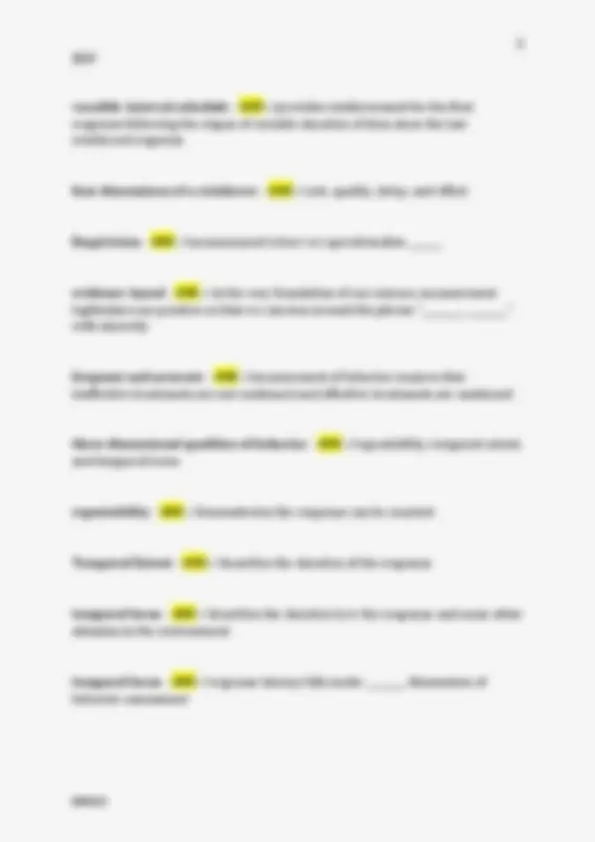
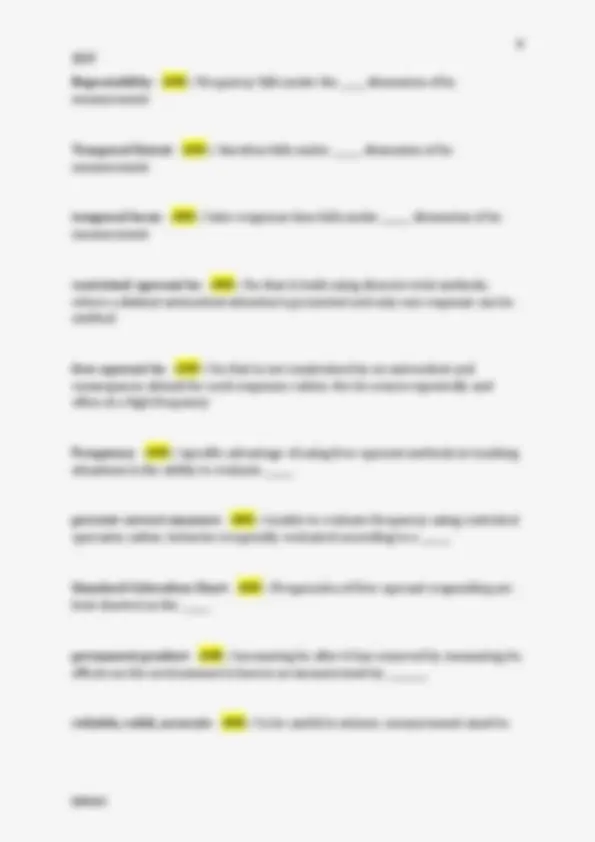
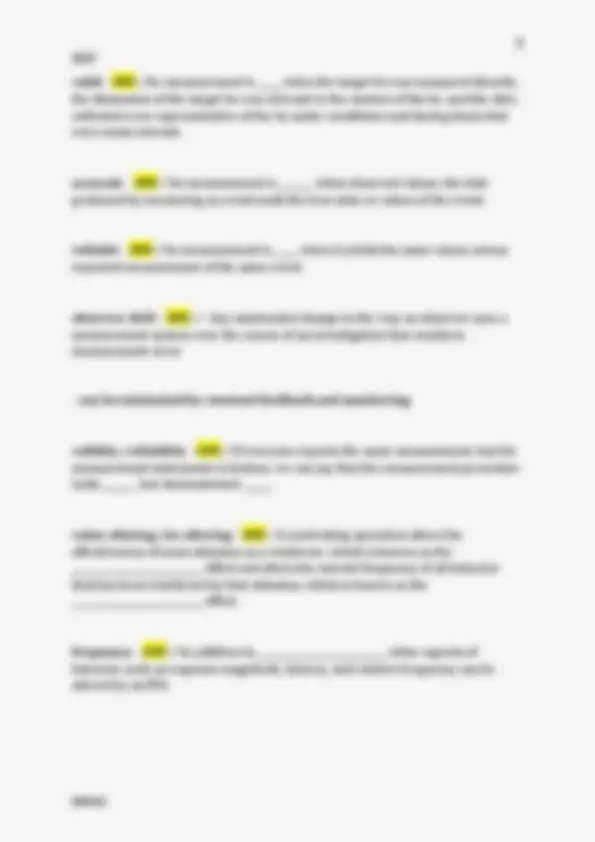
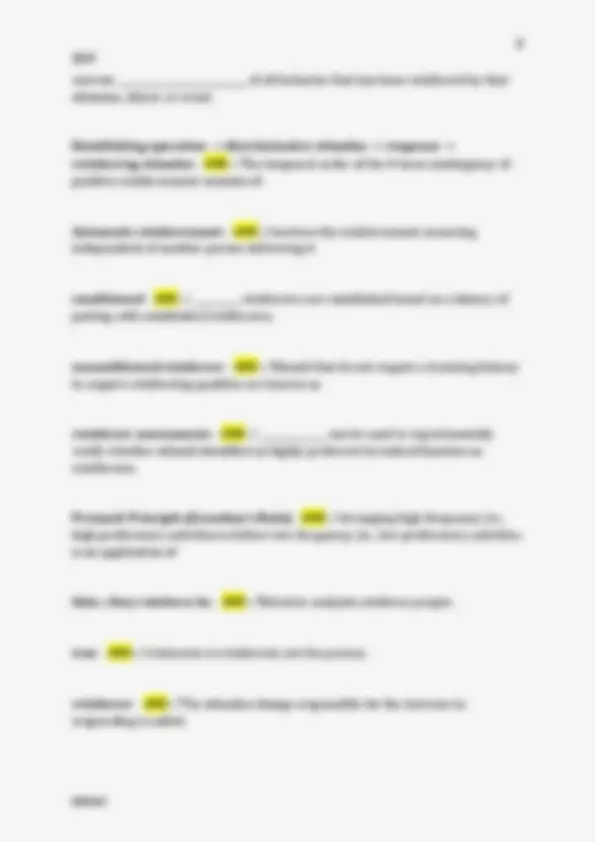
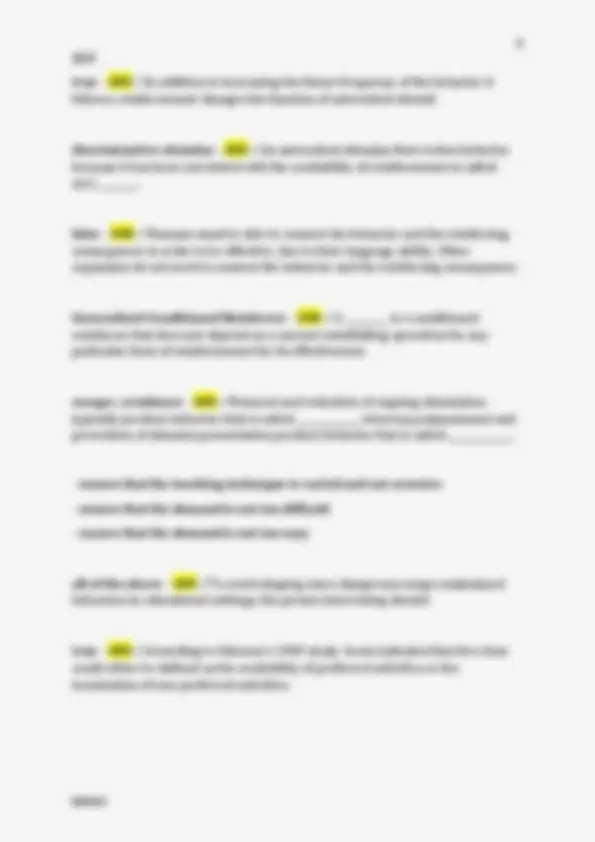
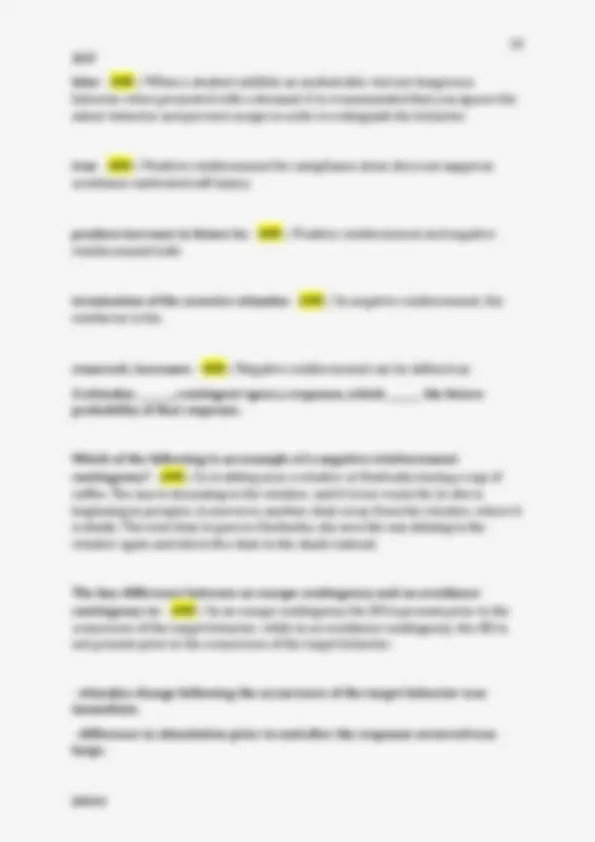
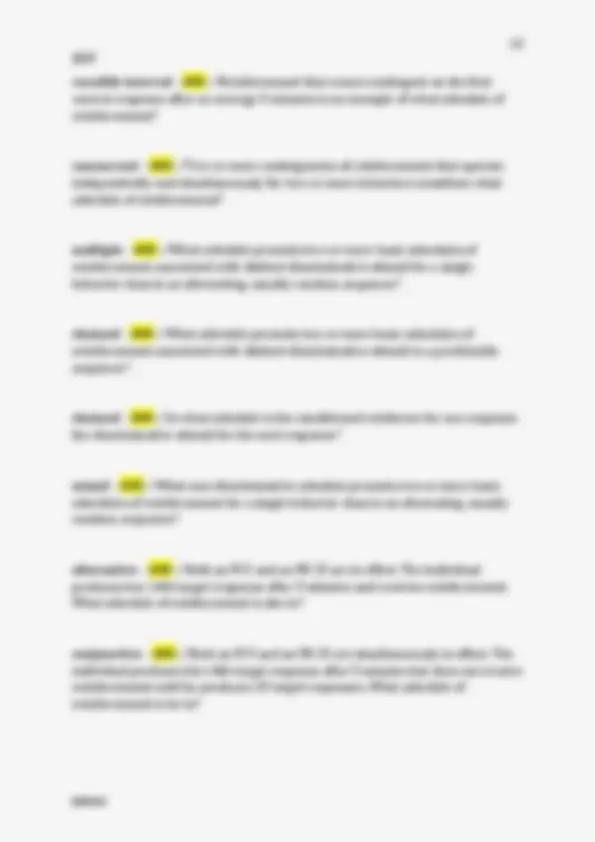
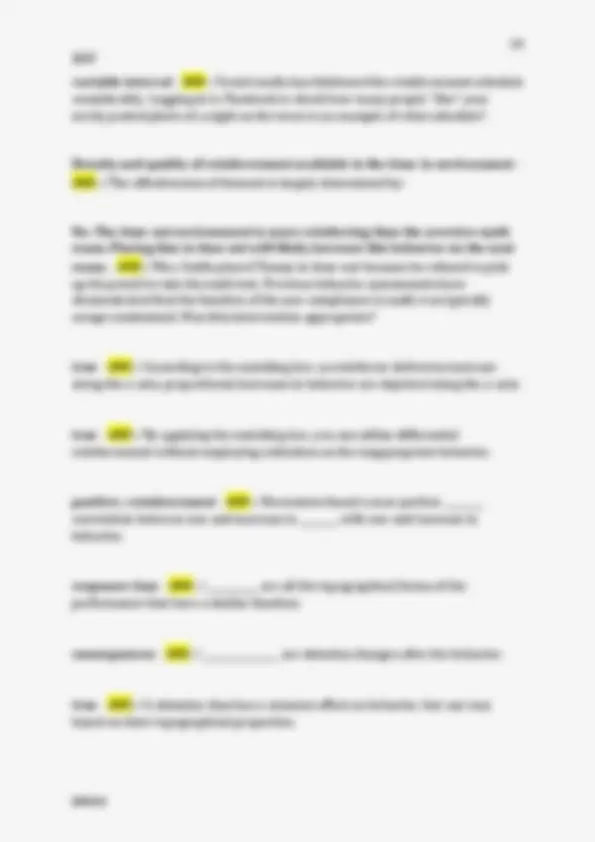
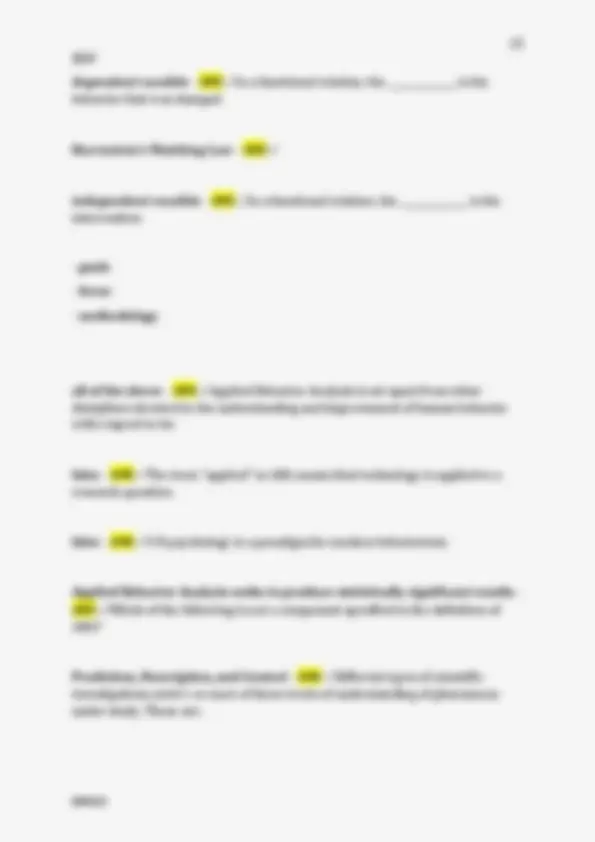
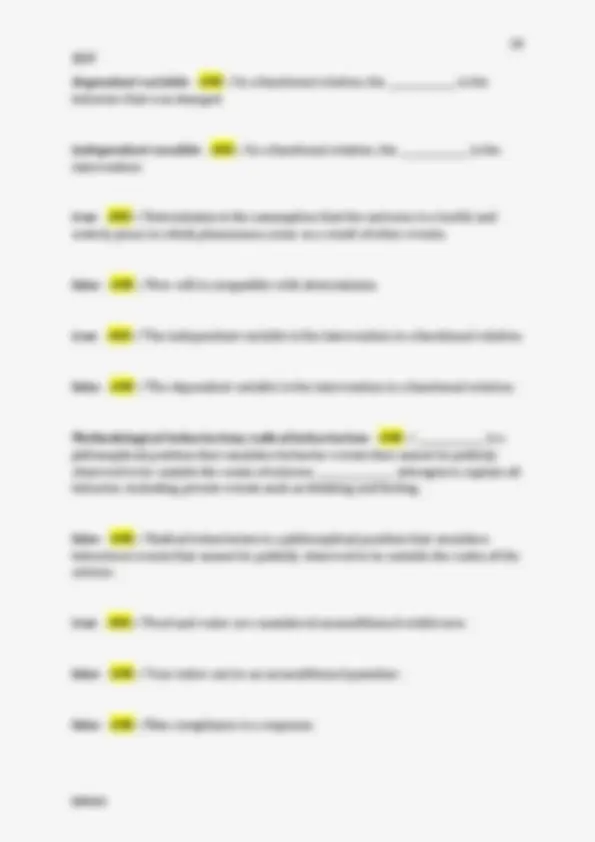
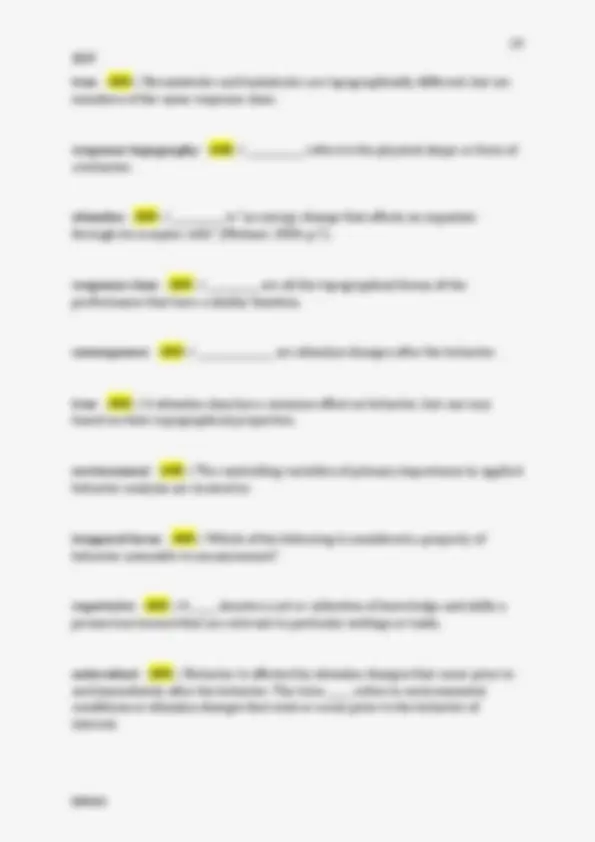
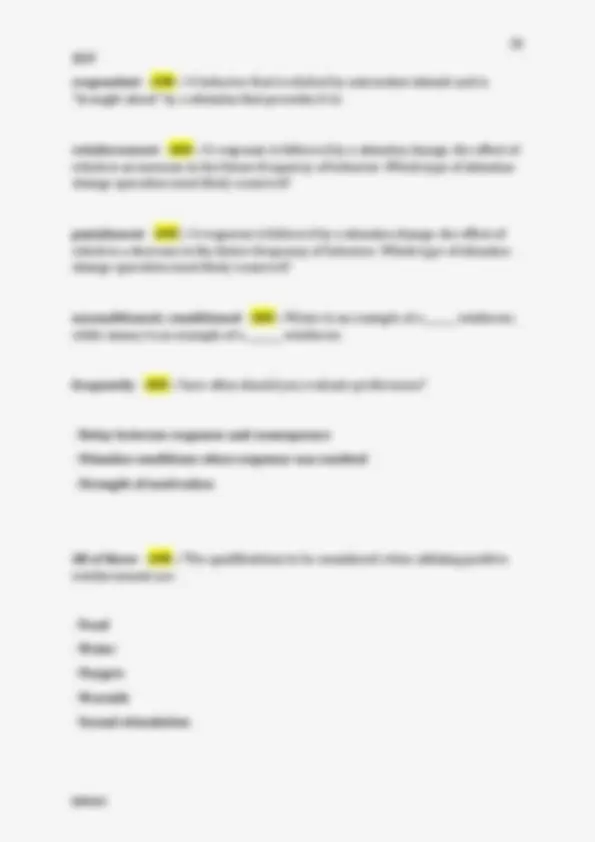
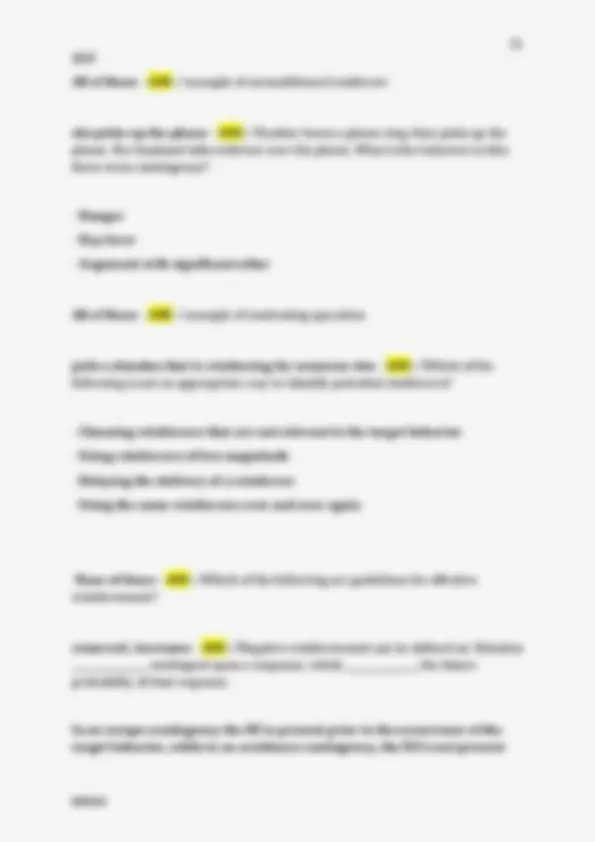
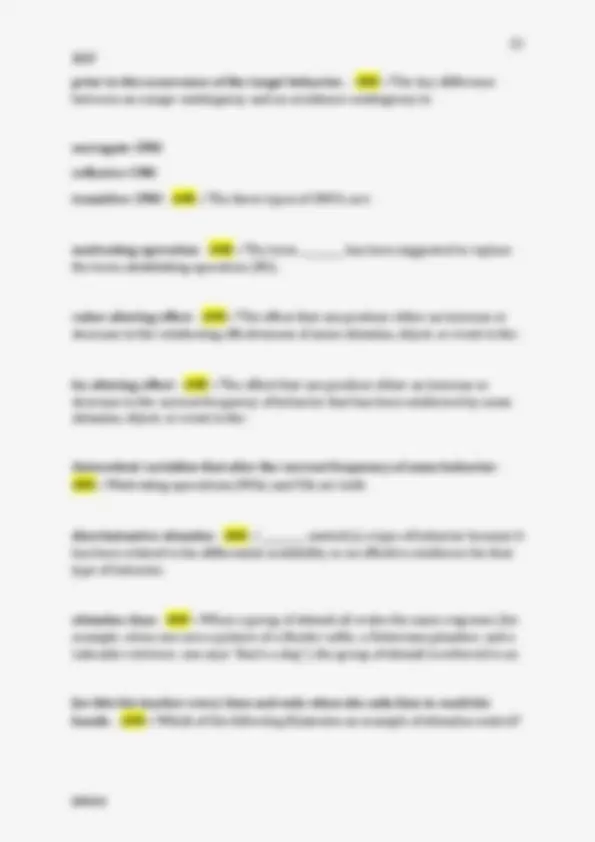
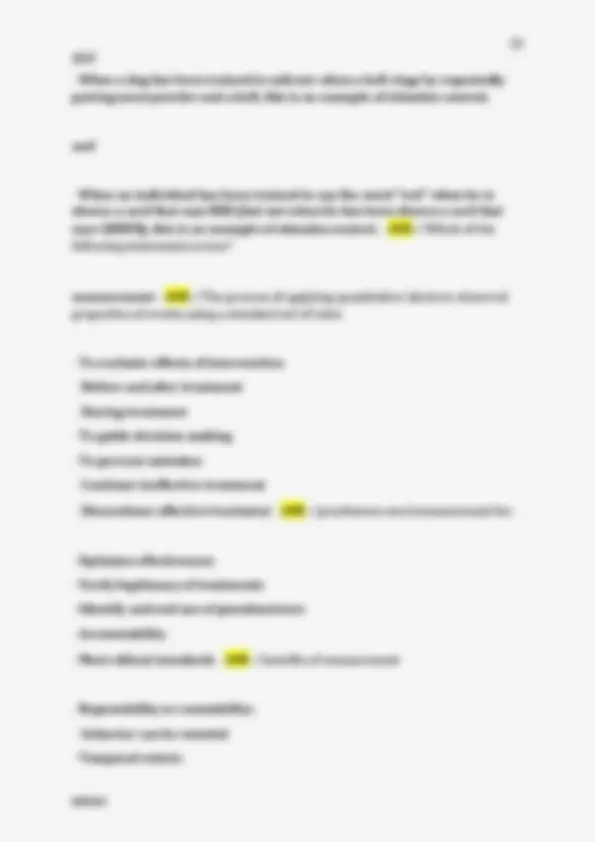
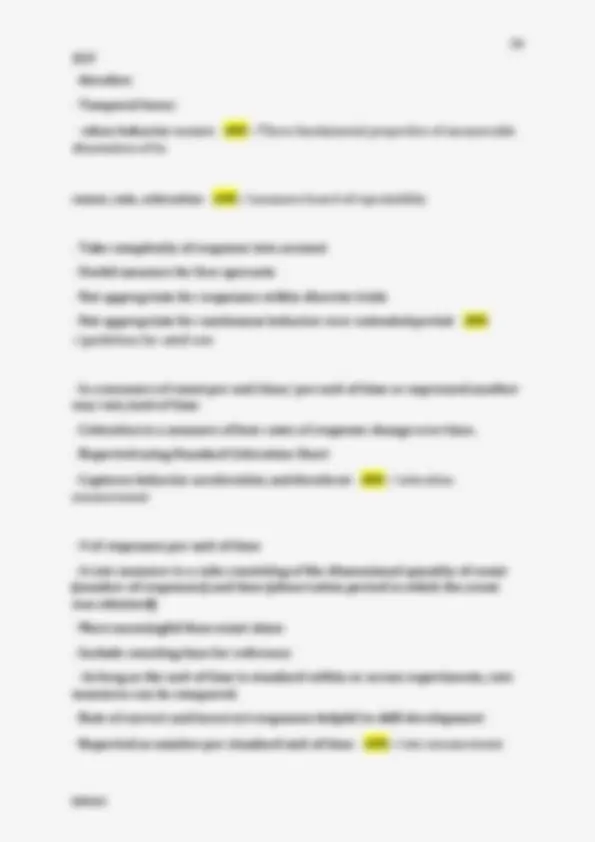
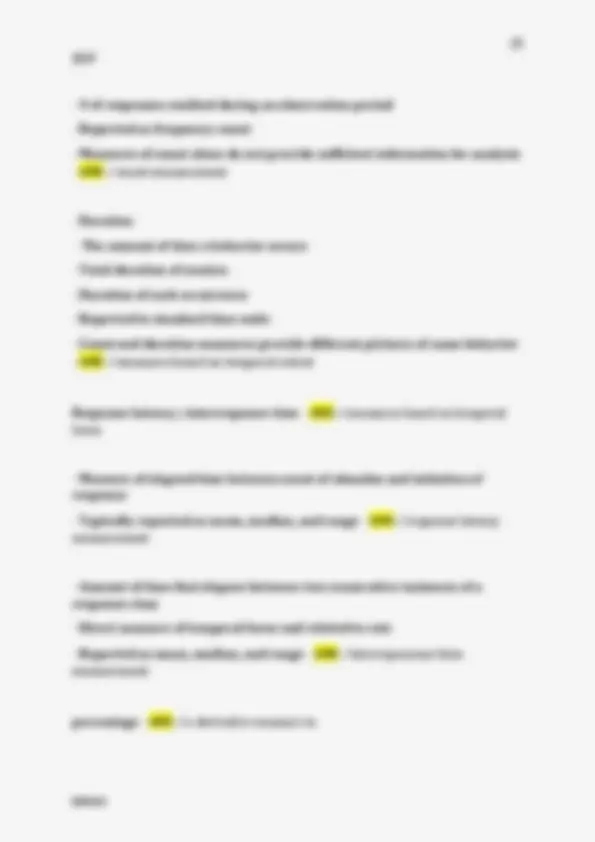
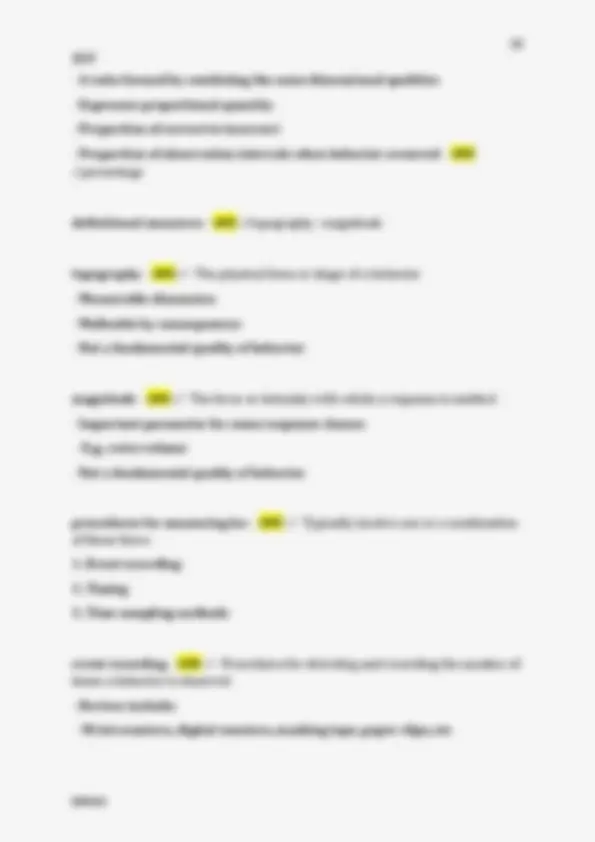
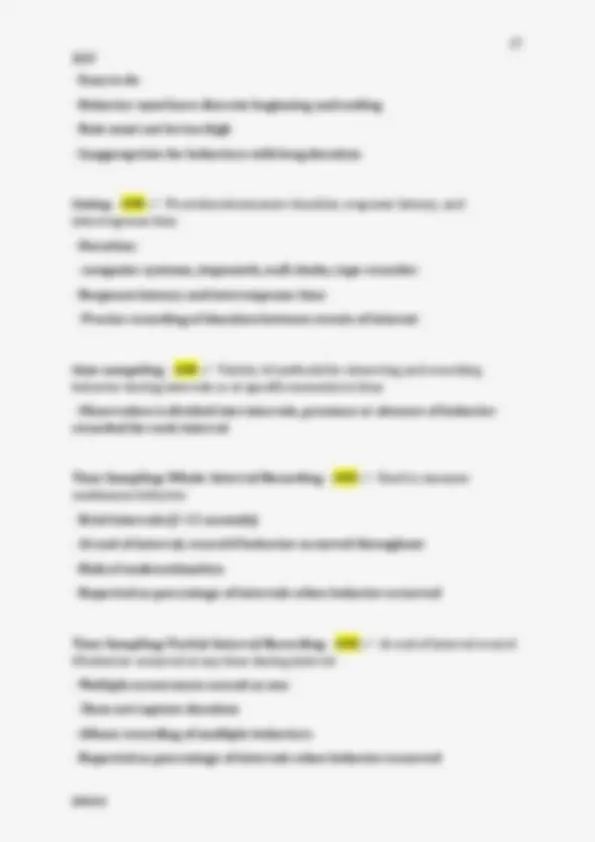
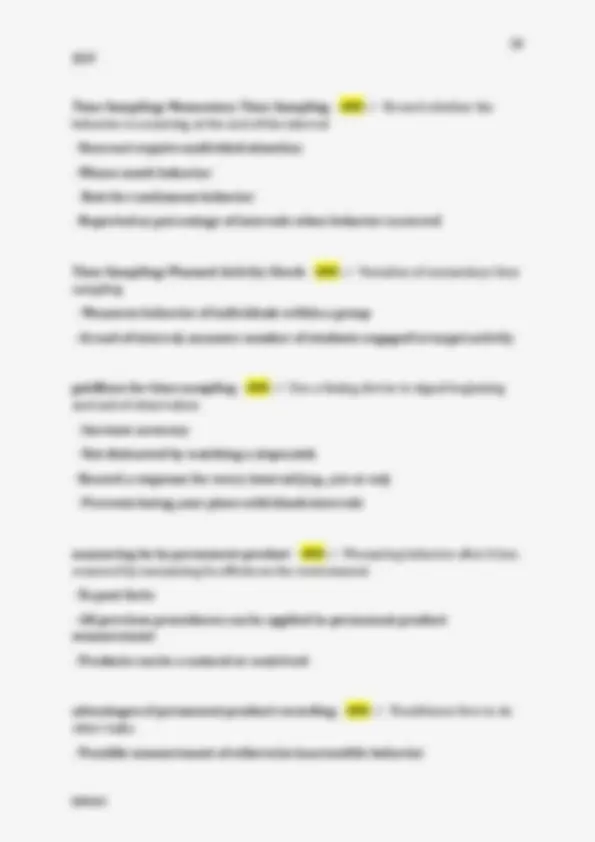
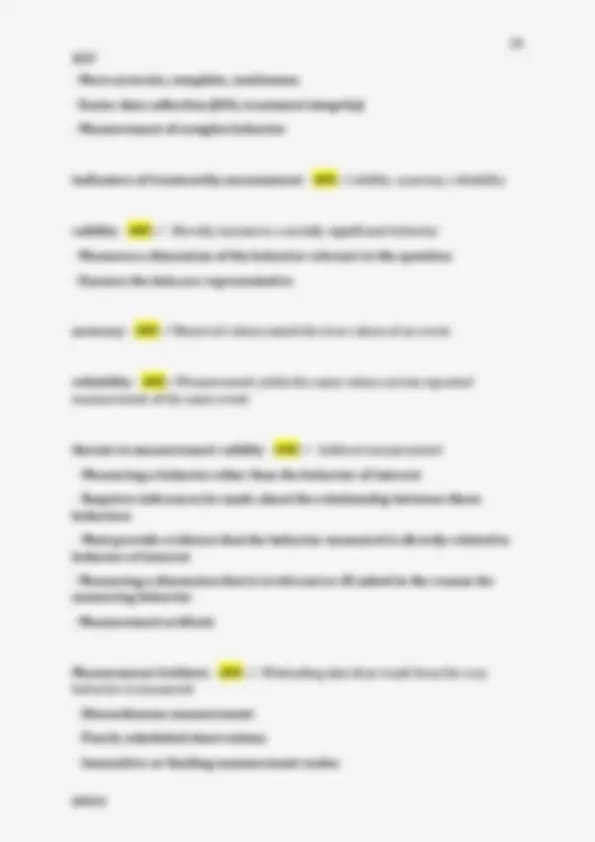
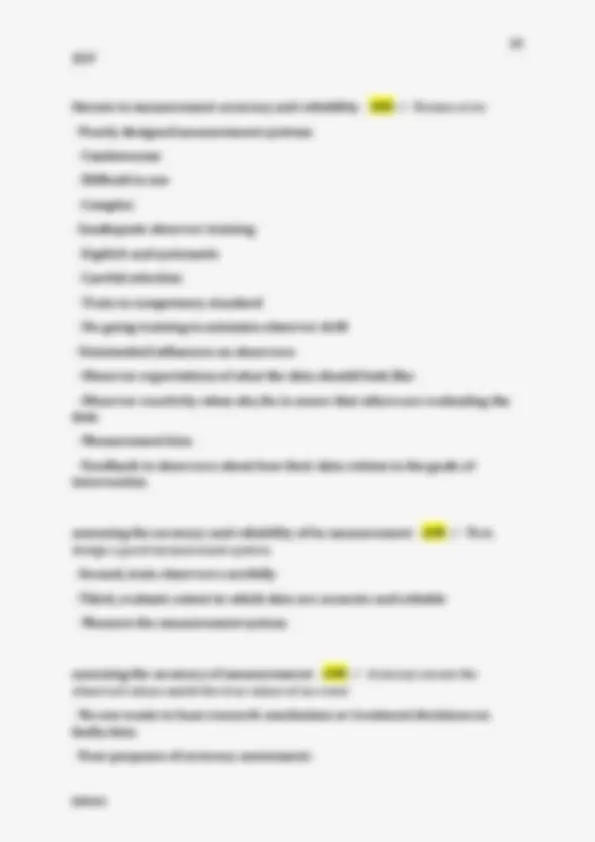
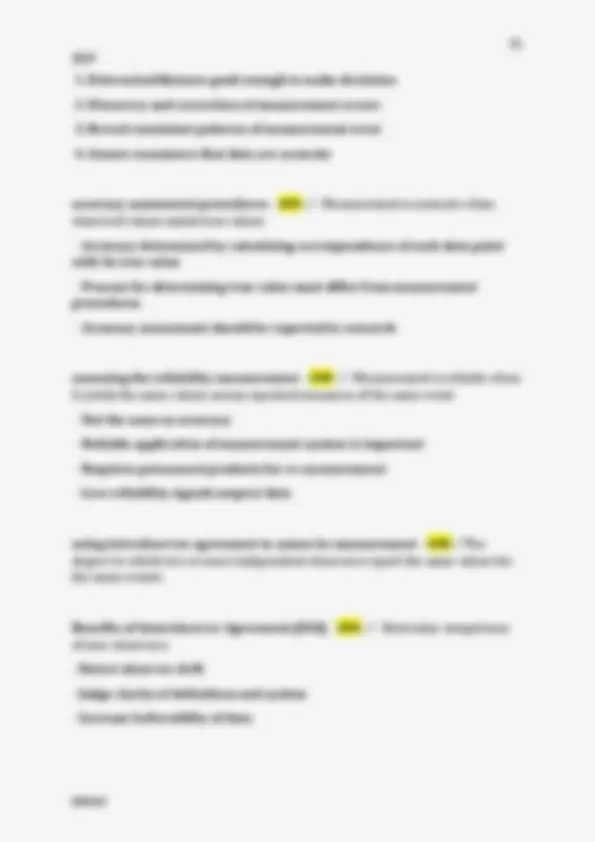
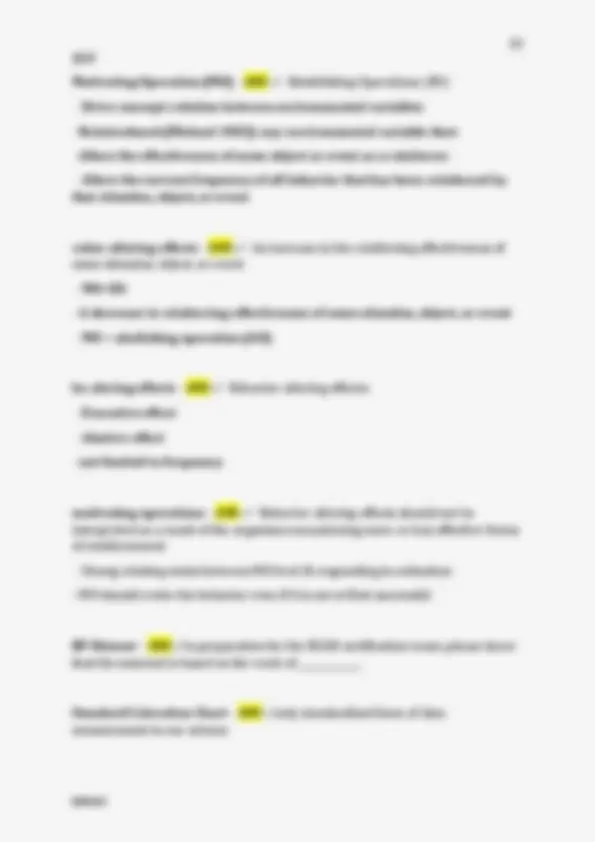
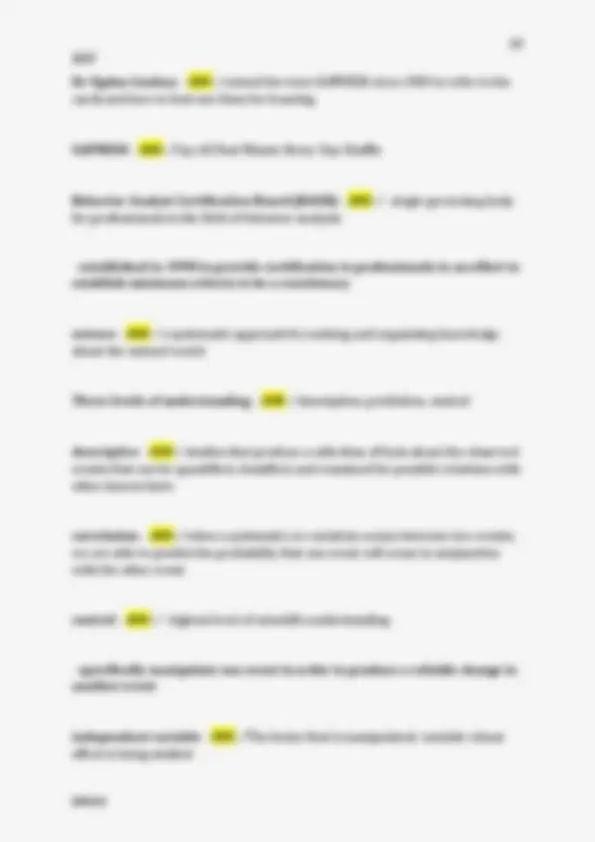
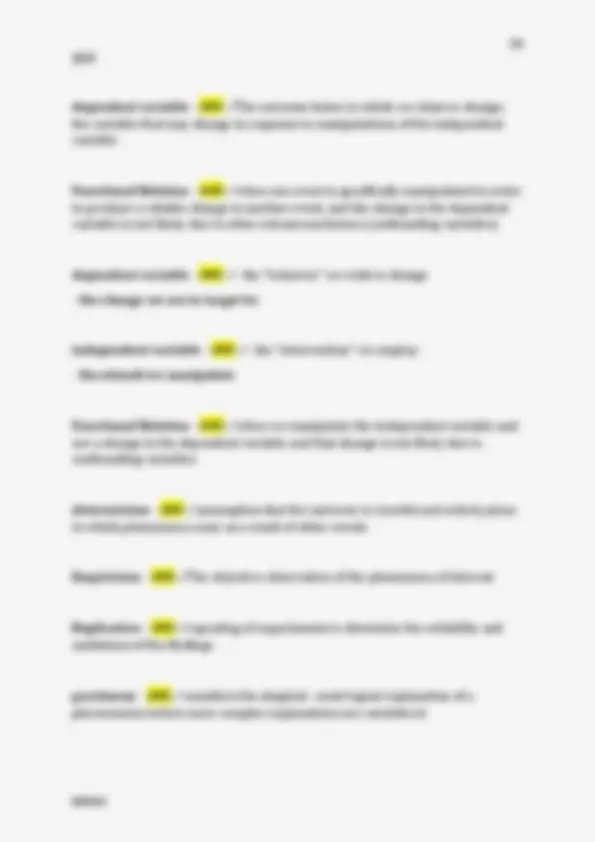
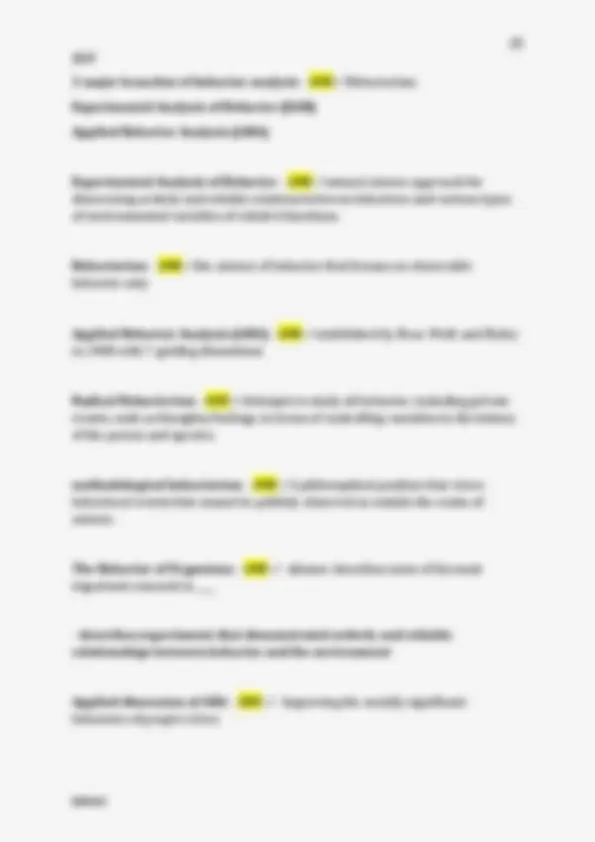
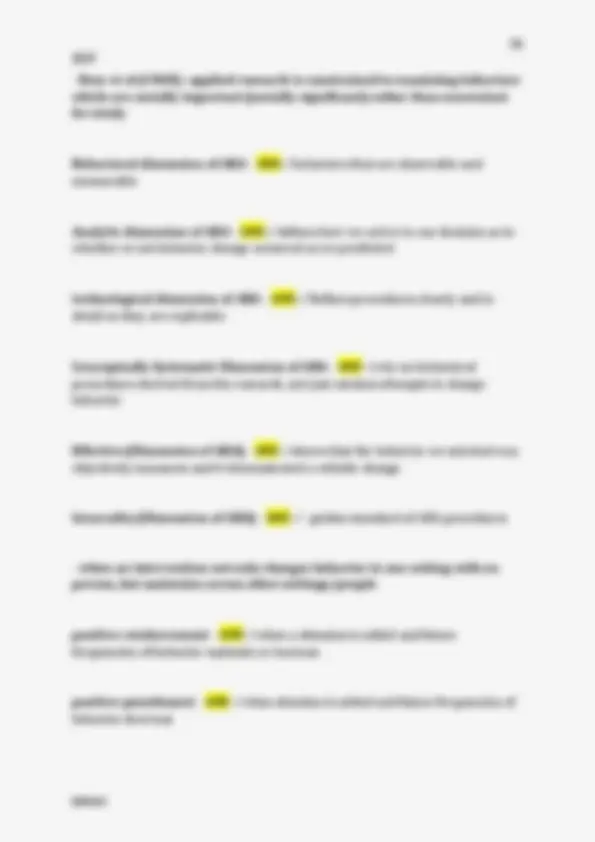
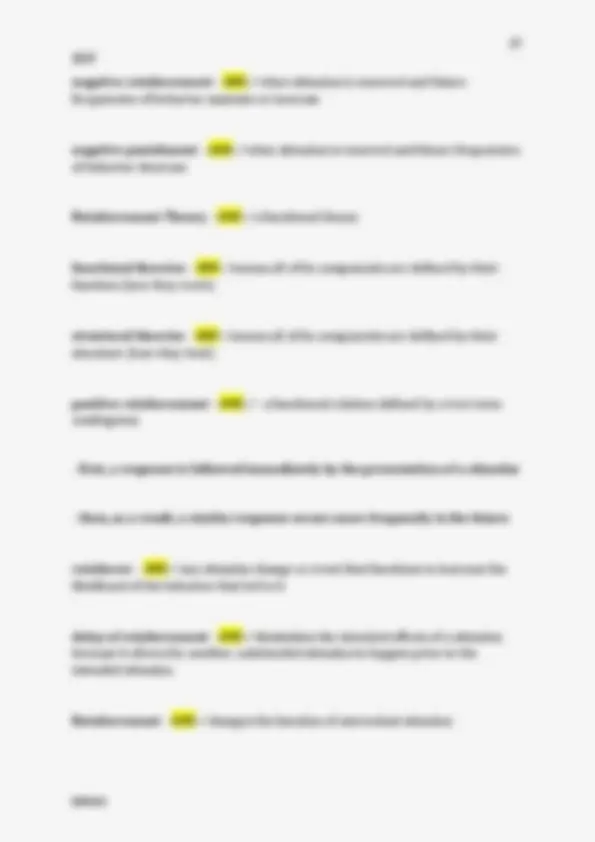
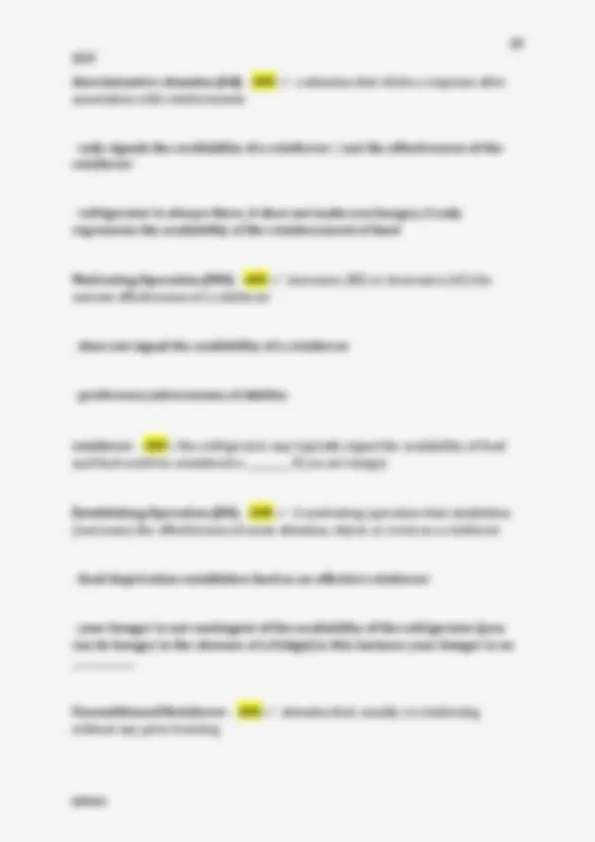
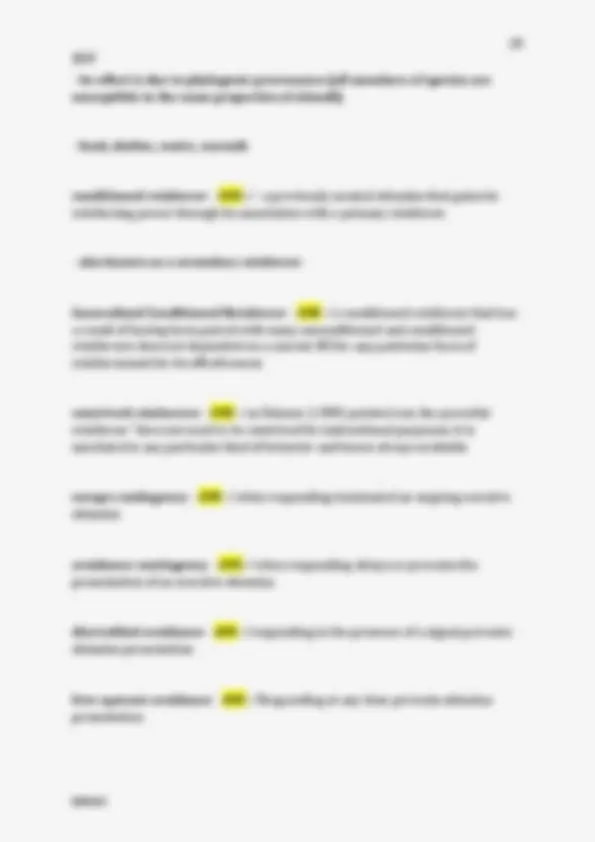
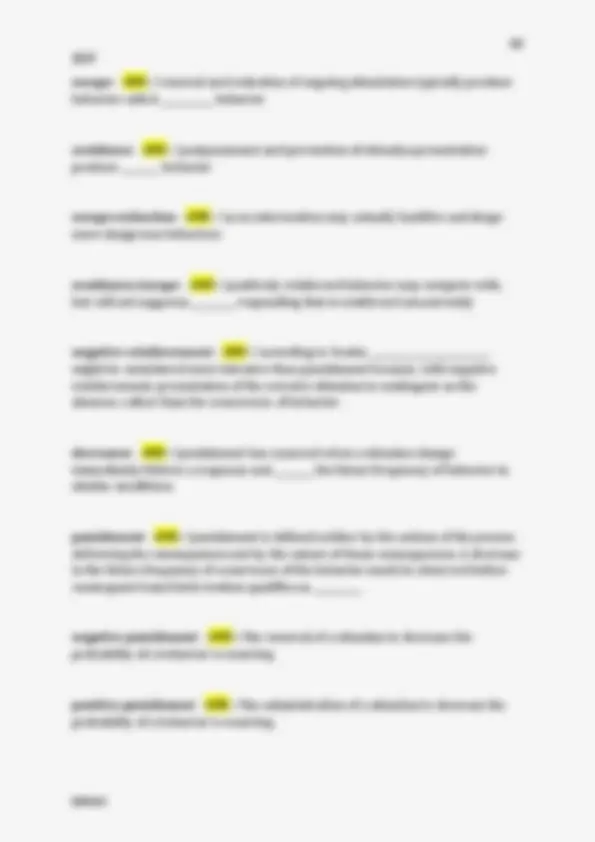
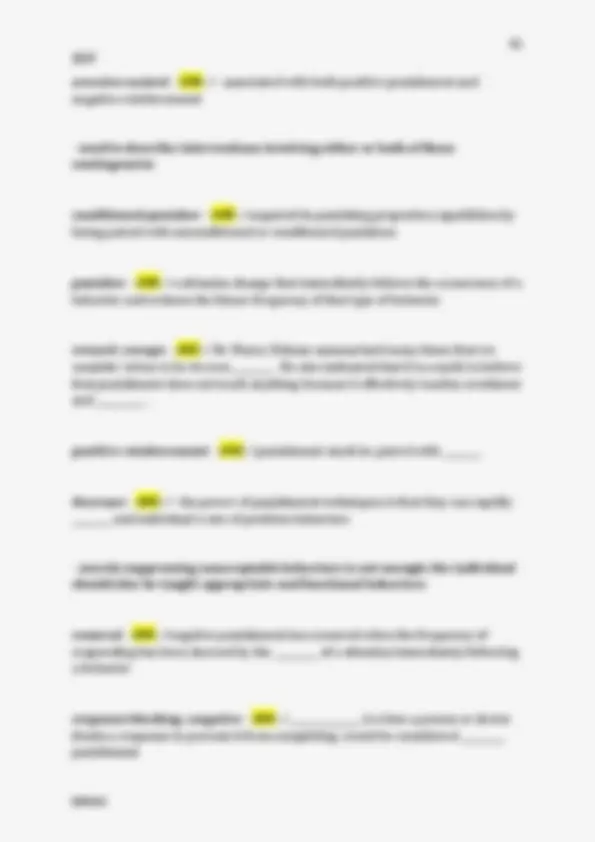
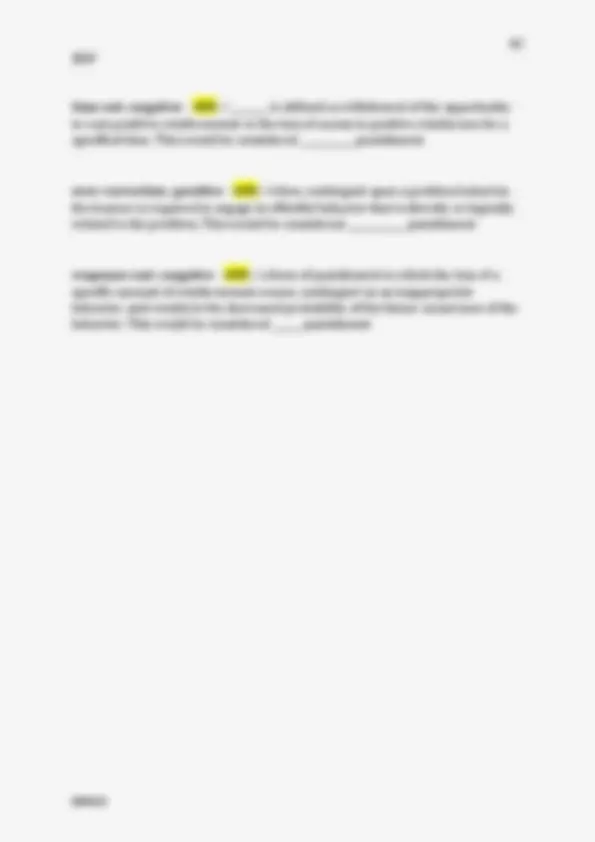


Study with the several resources on Docsity

Earn points by helping other students or get them with a premium plan


Prepare for your exams
Study with the several resources on Docsity

Earn points to download
Earn points by helping other students or get them with a premium plan
Community
Ask the community for help and clear up your study doubts
Discover the best universities in your country according to Docsity users
Free resources
Download our free guides on studying techniques, anxiety management strategies, and thesis advice from Docsity tutors
A comprehensive set of questions and answers for the edf6225 final exam, covering key concepts in behavior analysis and applied behavior analysis. It includes definitions, explanations, and examples of various principles and techniques, such as reinforcement schedules, motivating operations, and measurement of behavior. Useful for students preparing for the edf6225 final exam, but it may lack depth and context for a comprehensive understanding of the subject.
Typology: Exams
1 / 42

This page cannot be seen from the preview
Don't miss anything!



































restitutional overcorrection - ANS ✓after the problem behavior, the learner is required to repair the situation and bring the environment back to a condition that is notably improved than before the behavior occurred response cost - ANS ✓The contingent loss of reinforcers (e.g. a fine), producing a decrease of the frequency of behavior; a form of negative punishment reinforcing - ANS ✓time out will typically be ineffective if "time in" is not ________ conditioned punisher - ANS ✓a stimulus that has acquired its pushing capabilities by being paired with punishers (conditioned or unconditioned) decreases - ANS ✓punisher is a stimulus change that immediately follows the occurrence of a behavior and _______ the future frequency of that type of behavior ratio strain - ANS ✓results from abrupt increase in ration requirements when moving from denser to thinner reinforcement schedules interval schedule - ANS ✓if the contingency b/w responses and reinforcement depends on time, the schedule is call _______ ratio schedule - ANS ✓in the contingency b/w responses and reinforcement depends on the number of responses, the schedule is call _______
fixed-ratio schedule - ANS ✓requires a specified number of responses before a response produces reinforcement variable-ratio schedule - ANS ✓requires a variable number of responses before a response produces reinforcement fixed-interval schedule - ANS ✓provides reinforcement for the first response following the elapse of variable duration of time since the last reinforced response limited hold - ANS ✓when reinforcement remains available for a finite time following the elapse of the FI or VI schedule concurrent schedules of reinforcement - ANS ✓occurs when a) 2 or more contingencies of reinforcement b) operate independently and simultaneously c) for 2 or more behaviors; choice making Multiple Schedule of Reinforcement - ANS ✓occurs in an alternating , usually random sequence and can be identified by the discriminating stimulus variable-ratio schedule - ANS ✓requires a variable number of responses before a response produces reinforcement chained schedules - ANS ✓much like multiple schedules in that it relies on discriminative stimulus; however, the order is not random- it is always the same fixed-interval schedule - ANS ✓provides reinforcement for the response following the elapse of a specific, constant duration of time since the last reinforced response matching law - ANS ✓Herrenstein conceptualized the _______ by discovering a near perfect correlation b/w reinforcement and behavior
Repeatability - ANS ✓frequency falls under the _____ dimension of bx measurement Temporal Extent - ANS ✓duration falls under ______ dimension of bx measurement temporal locus - ANS ✓inter response time falls under ______ dimension of bx measurement restricted-operant bx - ANS ✓bx that is built using discrete-trial methods, where a distinct antecedent stimulus is presented and only one response can be emitted free-operant bx - ANS ✓bx that is not constrained by an antecedent and consequence stimuli for each response; rather, the bx occurs repeatedly and often at a high frequency Frequency - ANS ✓specific advantage of using free-operant methods in teaching situations is the ability to evaluate ______ percent-correct measure - ANS ✓unable to evaluate frequency using restricted operants; rather, behavior is typically evaluated according to a ______ Standard Celeration Chart - ANS ✓frequencies of free-operant responding are best charted on the ______ permanent product - ANS ✓measuring bx after it has occurred by measuring its effects on the environment is known as measurement by ________ reliable, valid, accurate - ANS ✓to be useful in science, measurement must be
valid - ANS ✓bx measurement is _____ when the target bx was measured directly, the dimension of the target bx was relevant to the context of the bx, and the data collected were representative of the bx under conditions and during times that were most relevant accurate - ANS ✓bx measurement is _______ when observed values, the date produced by measuring an event math the true state or values of the event reliable - ANS ✓bx measurement is _____ when it yields the same values across repeated measurement of the same event observer drift - ANS ✓- Any unintended change in the way an observer uses a measurement system over the course of an investigation that results in measurement error
discriminative stimulus ; motivation operations - ANS ✓___________________________ are related to the differential availability of a currently effective form of reinforcement for a particular type of behavior; ___________________________ are related to the differential reinforcing effectiveness of a particular type of environmental event. conditioned motivating operations (CMOs) - ANS ✓Motivating variables that alter the reinforcing effectiveness of other stimuli, objects, or events, but only as a result of the organism's learning history, are called ___________________________. surrogate - ANS ✓___________________________ CMO is a stimulus that acquires its MO effectiveness by being paired with another MO, and has the same value-altering and behavior-altering effects as the MO with which it was paired. reflexive - ANS ✓___________________________ CMO is a stimulus that acquires MO effectiveness by preceding some form of worsening or improvement. transitive - ANS ✓An environmental variable that establishes (or abolishes) the reinforcing effectiveness of another stimulus and evokes (or abates) the behavior that has been reinforced by that other stimulus is a ___________________________ CMO. availability - ANS ✓An SD controls a type of behavior because it has been related to the differential ___________________________ of an effective reinforcer for that type of behavior. value-altering - ANS ✓___________________________ is either an increase in the reinforcing effectiveness of some stimulus (EO) or a decrease in reinforcing effectiveness (AO). decrease ; frequency - ANS ✓In the abolishing operation, the value-altering effect is a ___________________________ in the current effectiveness of some stimulus, object, or event as reinforcement. The behavior-altering effect is a decrease in the
current ___________________________ of all behavior that has been reinforced by that stimulus, object, or event. Establishing operation - > discriminative stimulus - > response - > reinforcing stimulus - ANS ✓The temporal order of the 4-term contingency of positive reinforcement consists of: Automatic reinforcement - ANS ✓involves the reinforcement occurring independent of another person delivering it conditioned - ANS ✓__________ reinforcers are established based on a history of pairing with established reinforcers. unconditioned reinforcer - ANS ✓Stimuli that do not require a learning history to acquire reinforcing qualities are known as reinforcer assessments - ANS ✓______________ can be used to experimentally verify whether stimuli identified as highly preferred do indeed function as reinforcers. Premack Principle (Grandma's Rule) - ANS ✓Arranging high-frequency (ie., high preference) activities to follow low-frequency (ie., low preference) activities is an application of false ; they reinforce bx - ANS ✓Behavior analysts reinforce people. true - ANS ✓A behavior is reinforced, not the person. reinforcer - ANS ✓The stimulus change responsible for the increase in responding is called:
false - ANS ✓When a student exhibits an undesirable, but not dangerous behavior when presented with a demand, it is recommended that you ignore the minor behavior and prevent escape in order to extinguish the behavior. true - ANS ✓Positive reinforcement for compliance alone does not suppress avoidance-motivated self-injury. produce increase in future bx - ANS ✓Positive reinforcement and negative reinforcement both termination of the aversive stimulus - ANS ✓In negative reinforcement, the reinforcer is the removed ; increases - ANS ✓Negative reinforcement can be defined as: A stimulus _______, contingent upon a response, which _______ the future probability of that response. Which of the following is an example of a negative reinforcement contingency? - ANS ✓Jo is sitting near a window at Starbucks having a cup of coffee. The sun is streaming in the window, and it is too warm for Jo-she is beginning to perspire. Jo moves to another chair away from the window, where it is shady. The next time Jo goes to Starbucks, she sees the sun shining in the window again and sits in the chair in the shade instead. The key difference between an escape contingency and an avoidance contingency is: - ANS ✓In an escape contingency the EO is present prior to the occurrence of the target behavior, while in an avoidance contingency, the EO is not present prior to the occurrence of the target behavior.
varaible interval - ANS ✓Reinforcement that occurs contingent on the first correct response after an average 5 minutes is an example of what schedule of reinforcement? concurrent - ANS ✓Two or more contingencies of reinforcement that operate independently and simultaneously for two or more behaviors constitute what schedule of reinforcement? multiple - ANS ✓What schedule presents two or more basic schedules of reinforcement associated with distinct discriminative stimuli for a single behavior class in an alternating, usually random, sequence? chained - ANS ✓What schedule presents two or more basic schedules of reinforcement associated with distinct discriminative stimuli in a predictable sequence? chained - ANS ✓In what schedule is the conditioned reinforcer for one response the discriminative stimuli for the next response? mixed - ANS ✓What non-discriminative schedule presents two or more basic schedules of reinforcement for a single behavior class in an alternating, usually random, sequence? alternative - ANS ✓Both an FI 5 and an FR 25 are in effect. The individual produces her 14th target response after 5 minutes and receives reinforcement. What schedule of reinforcement is she in? conjunctive - ANS ✓Both an FI 5 and an FR 25 are simultaneously in effect. The individual produces his 14th target response after 5 minutes but does not receive reinforcement until he produces 25 target responses. What schedule of reinforcement is he in?
variable interval - ANS ✓Social media has thickened the reinforcement schedule considerably. Logging in to Facebook to check how many people "like" your newly posted photo of a night on the town is an example of what schedule? Density and quality of reinforcement available in the time-in environment - ANS ✓The effectiveness of timeout is largely determined by: No. The time-out environment is more reinforcing than the aversive math exam. Placing him in time out will likely increase this behavior on the next exam. - ANS ✓Mrs. Smith placed Timmy in time-out because he refused to pick up his pencil to take his math test. Previous behavior assessments have demonstrated that the function of his non-compliance in math was typically escape maintained. Was this intervention appropriate? true - ANS ✓According to the matching law, as reinforcer deliveries increase along the x-axis, proportional increases in behavior are depicted along the y-axis. true - ANS ✓By applying the matching law, you can utilize differential reinforcement without employing extinction on the inappropriate behavior. positive ; reinforcement - ANS ✓Herrnstein found a near-perfect, ________ correlation between one unit increase in ________ with one unit increase in behavior. response class - ANS ✓___________ are all the topographical forms of the performance that have a similar function. consequences - ANS ✓________________ are stimulus changes after the behavior. true - ANS ✓A stimulus class has a common effect on behavior, but can vary based on their topographical properties.
Experimentation, Philosophic Doubt, & Parsimony - ANS ✓Scientific "attitudes" as described by Skinner include: respondent behavior. - ANS ✓Behavior that is elicited by antecedent stimuli is referred to as: a reflex incules: - ANS ✓An eliciting stimulus and the behavior it produces.
different histories of reinforcemnt - ANS ✓Differences in the way we respond to situations are primarily the result of: Respondent behavior is: - ANS ✓elicited by antecedant events true - ANS ✓Although other fields aim to understand and improve human behavior, Applied Behavior Analysis distinguishes itself by its focus, goals, and methods. true - ANS ✓The three levels of scientific understanding are: describe, predict, and control applied - ANS ✓Which characteristic of ABA refers to the commitment to affecting improvements in behaviors that enhance and improve people's lives? technological - ANS ✓Which characteristic of ABA refers to clarity in its methodology? generality - ANS ✓Which characteristic of ABA refers to a behavior change that either lasts over time or appears in novel environments? conceptually systematic - ANS ✓An intervention that is ____________ will define the behavior change as it was derived from basic principles of ABA, not a "bag of tricks". independent variable; dependent variable; functional relation - ANS ✓Results of experiments that show that specific manipulations of one event, or the ___________________ produce a reliable change in another event, or the ________________ and that change was unlikely due to confounding variables is an example of a(n) _________________.
true - ANS ✓Breaststroke and backstroke are topographically different, but are members of the same response class. response topography - ANS ✓____________ refers to the physical shape or form of a behavior. stimulus - ANS ✓___________ is "an energy change that affects an organism through its receptor cells" (Michael, 2004, p.7). response class - ANS ✓___________ are all the topographical forms of the performance that have a similar function. consequence - ANS ✓________________ are stimulus changes after the behavior. true - ANS ✓A stimulus class has a common effect on behavior, but can vary based on their topographical properties. enviornment - ANS ✓The controlling variables of primary importance in applied behavior analysis are located in: temporal locus - ANS ✓Which of the following is considered a property of behavior amenable to measurement? repertoire - ANS ✓A _____ denotes a set or collection of knowledge and skills a person has learned that are relevant to particular settings or tasks. antecedant - ANS ✓Behavior is affected by stimulus changes that occur prior to and immediately after the behavior. The term _____ refers to environmental conditions or stimulus changes that exist or occur prior to the behavior of interest.
respondent - ANS ✓A behavior that is elicited by antecedent stimuli and is "brought about" by a stimulus that precedes it is: reinforcement - ANS ✓A response is followed by a stimulus change, the effect of which is an increase in the future frequency of behavior. Which type of stimulus- change operation most likely occurred? punishment - ANS ✓A response is followed by a stimulus change, the effect of which is a decrease in the future frequency of behavior. Which type of stimulus- change operation most likely occurred? unconditioned ; conditioned - ANS ✓Water is an example of a ______ reinforcer, while money is an example of a _______ reinforcer. frequently - ANS ✓how often should you evaluate preferences?